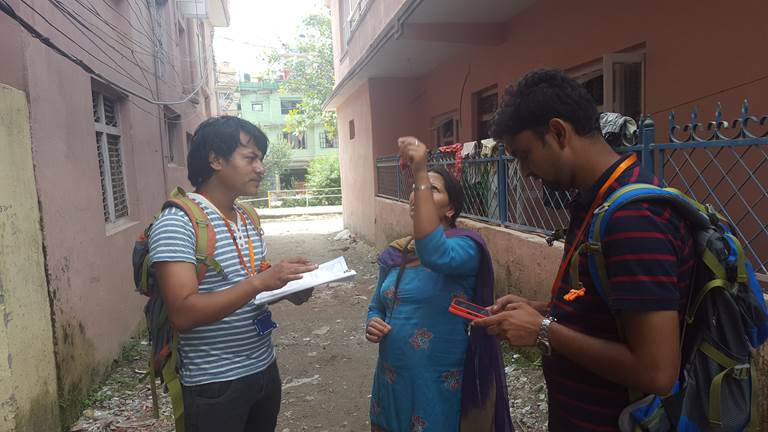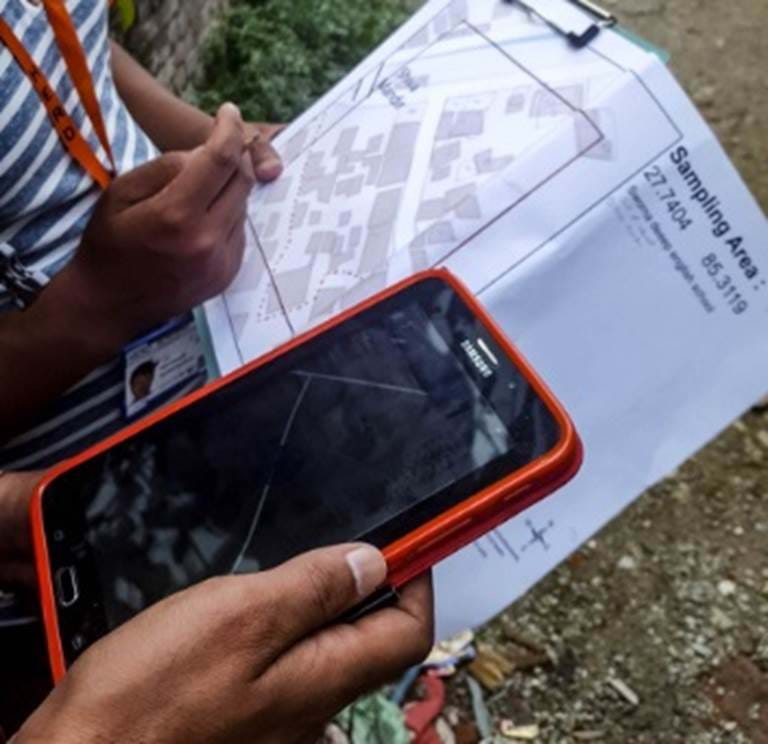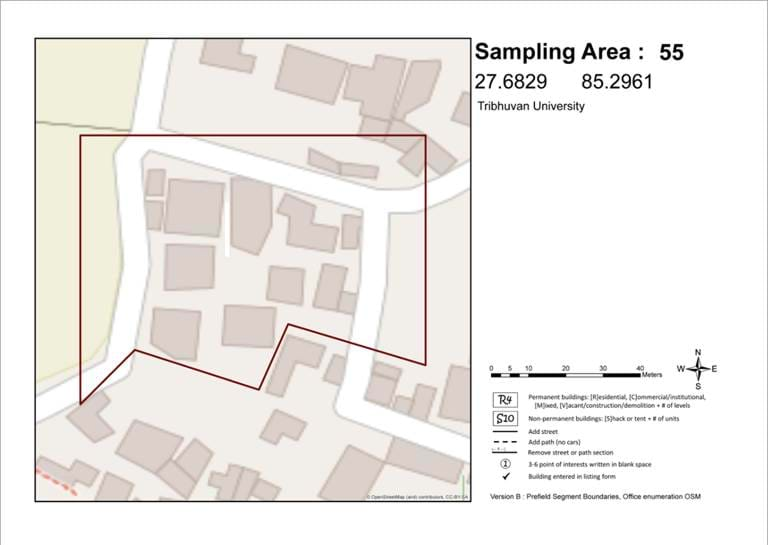Primary purpose of the survey
The Surveys for Urban Equity (SUE) Project is a collaboration among the University of Leeds Nuffield Centre, HERD International, CIPRB, Ark Foundation, and Hanoi University of Public Health. The project aimed to estimate prevalence of accidents/injuries, depression, and poverty indicators in Kathmandu Valley, and in select neighbourhoods of Dhaka and Hanoi. The SUE surveys were part of a MRC Global Grand Challenges Research Project evaluating the use of gridded population sampling and one-stage versus two-stage sampling in complex urban settings.


Survey design
In Kathmandu Valley, Nepal, 1,200 households were interviewed in 60 clusters. Thirty clusters were randomly selected for one-stage cluster sampling, and 30 clusters were randomly selected for two-stage cluster sampling to be able to compare the effect of sample design. Two-stage clusters were comprised of approximately 200 households each, and 20 households were systematically sampled and interviewed. The one-stage clusters were comprised of approximately 20 households each, and all eligible individuals in each cluster were interviewed. The SUE-Dhaka and SUE-Hanoi surveys were much smaller with just 20 one-stage clusters of 20 households each.
Tools and protocols used to implement the survey
The SUE Project used the GridSample R algorithm to sample 78 clusters of approximately 200 households each. Each cluster was reviewed in Google Earth and uninhabited clusters were dropped. The remaining clusters were randomised to the one-stage and two-stage arms of the study, and unassigned clusters were reserved for back-up. In one-stage clusters, the cluster was segmented by cell and the centroid cell was selected for sampling.
The SUE Project piloted a number of tools and protocols for mapping and listing households in gridded population surveys.
They chose to use OpenStreetMap to prepare and update field maps, and tablets with a GPS-enabled Open Data Kit app to collect household listing data. A detailed 165-page manual describing their gridded population sample design and implementation protocols is available on the SUE Project website.
Fieldwork experience
In Nepal, the time and cost to implement the two-stage gridded population survey was similar to previous census-based surveys, however, the SUE team was more confident in the accuracy of maps and re-identification of households in this gridded population survey. In the one-stage sampling units across all three countries, the team was able to include street-sleepers, mobile populations, and long-term residents of guesthouses in the survey, which was not possible in two-stage sampling units due to the two month time lag between household listing and interviewers.

Advice for other gridded population survey teams
The SUE Project team made two separate visits to the field to first map clusters, then interview selected households. In Nepal, this was efficient because both one-stage and two-stage sampling were used. In one-stage sampling units, the team mapped dwellings rather than households during the first visit, and completed a household listing and interviews with all residents during the second visit.

